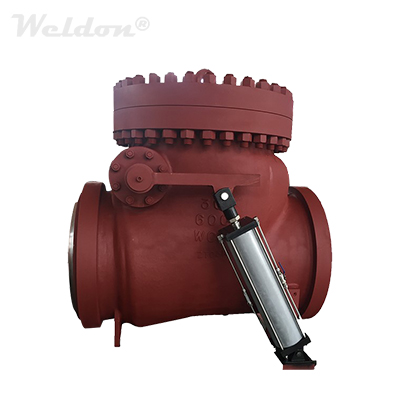Common check valves can be divided into swing check valves and lift check valves.
Working Principle of Swing Check Valve
Swing check valves have a hinge mechanism and a valve disc like a door that is free to rest on an inclined valve seat surface. In order to ensure that the valve flap can reach the proper position of the valve seat surface every time, it is designed in the hinge mechanism, so that the valve flap has enough swing space and makes full contact with the valve seat comprehensively. The valve flap can be made entirely of metal, or the metal can be inlaid with leather, rubber, or a synthetic material covering, which depends on the requirements of service performance. When the swing check valve is fully opened, the fluid pressure is almost unimpeded, so the pressure drop through the valve is relatively small.
Working Principle of Lift Check Valve
The disc of the lift check valve is located on the sealing surface of the valve seat on the valve body. Except that the valve disc can freely rise and fall, the rest of the valve is like a globe valve. The fluid pressure lifts the valve disc from the sealing surface of the valve seat, and the medium backflow causes the valve disc to fall back onto the valve seat and cut off the flow. According to the using conditions, the valve flap can be of all-metal structure or in the form of inlaying rubber pads or rubber rings on the flap frame. Like a globe valve, the passage of fluid through the lift check valve is narrow, so the pressure drop through the lift check valve is larger than that of the swing check valve, and the flow rate of the swing check valve is subject to few restrictions.

